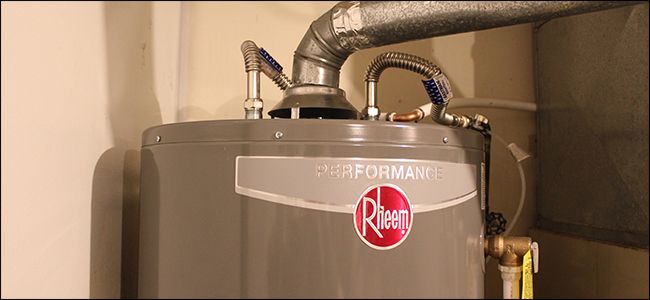Are you currently looking for help about Tips For Maintaining Your Hot Water Heater?

Warm water is important for daily comfort, whether it's for a refreshing shower or washing dishes. To guarantee your warm water system runs successfully and lasts much longer, routine maintenance is essential. This short article provides practical tips and understandings on just how to preserve your home's hot water system to prevent disruptions and costly fixings.
Intro
Preserving your home's hot water system may seem daunting, yet with a couple of basic steps, you can guarantee it runs smoothly for years ahead. This overview covers whatever from understanding your warm water system to DIY maintenance pointers and recognizing when to contact professional help.
Relevance of Preserving Your Hot Water System
Normal upkeep not only extends the life-span of your hot water system but additionally guarantees it operates successfully. Ignoring maintenance can bring about reduced efficiency, greater power bills, and also premature failing of the system.
Indications Your Hot Water System Demands Maintenance
Knowing when your warm water system needs focus can stop major concerns. Watch out for signs such as irregular water temperature, weird noises from the heating system, or rustic water.
Flushing the Hot Water Heater
Flushing your hot water heater removes debris buildup, boosting effectiveness and lengthening its life.
Checking and Changing Anode Rods
Anode rods protect against corrosion inside the storage tank. Inspecting and changing them when worn out is important.
Complex Problems Requiring Expert Aid
Examples consist of major leakages, electrical issues, or if your hot water heater is consistently underperforming.
Routine Specialist Maintenance Perks
Professional maintenance can consist of comprehensive examinations, tune-ups, and making certain conformity with safety and security requirements.
Inspecting and Changing Temperature Setups
Readjusting the temperature setups guarantees optimum performance and safety and security.
DIY Tips for Upkeep
You can carry out numerous maintenance jobs yourself to keep your warm water system in top problem.
Checking for Leaks
Consistently inspect pipes and links for leaks, as these can cause water damage and higher costs.
Understanding Your Warm Water System
Before diving into upkeep tasks, it's valuable to recognize the basic parts of your hot water system. Usually, this consists of the water heater itself, pipes, anode poles, and temperature controls.
Regular Monthly Upkeep Tasks
Routine month-to-month checks can help catch small issues before they intensify.
Examining Pressure Alleviation Valves
Examining the pressure relief valve guarantees it operates correctly and avoids too much stress buildup.
Protecting Pipes
Protecting warm water pipes lowers heat loss and can conserve power.
When to Call a Professional
While do it yourself upkeep is useful, some concerns require expert expertise.
Final thought
Normal maintenance of your home's hot water system is crucial for efficiency, durability, and price savings. By complying with these ideas and knowing when to seek professional assistance, you can make certain a trusted supply of hot water without unforeseen disturbances.
How to Maintain an Instant Hot Water Heater
Before tinkering with your hot water heater, make sure that it’s not powered on. You also have to turn off the main circuit breaker and shut off the main gas line to prevent accidents. Also turn off the water valves connected to your unit to prevent water from flowing into and out of the appliance. 2. When you’re done, you have to detach the purge valves’ caps. These look like the letter “T” and are situated on either side of the water valves. Doing so will release any pressure that has accumulated inside the valves while at the same time avoid hot water from shooting out and burning your skin. 3. When the purge valves’ caps are removed, you have to connect your hosing lines to the valves. Your unit should have come with three hoses but if it didn’t, you can purchase these things from any hardware or home repair shops. You can also get them from retail stores that sell water heating systems. Read the user’s manual and follow it to complete this task properly. When the hosing lines are connected, open the purge port’s valves. 4. You should never use harsh chemical cleaners or solutions when cleaning your unit. Make use of white vinegar instead. It should be undiluted and you’ll probably use about 2 gallons. 5. Now flush your water heater. This task should probably take about 40 minutes. We can’t give you specific directions for this because the procedure is carried out depending on the type, model and brand of your heater. With that being said, refer to the user’s manual. 6. When you’re done draining the unit, you have to turn off the purge port valves again. Remove the hosing lines that you earlier installed on each of the water valves. Put the valve caps (purge port) back in their respective places and be very careful so as not to damage the rubber discs that are found inside these caps. 7. Now that everything’s back in place, check your user’s manual again to find out how to reactivate your water heating system. 8. Once it is working, turn one of your hot water faucets on just to let air pass through the heater’s water supply pipes. Leave the tap on until water flows smoothly out of it. https://www.orrplumbing.com/blog/2014/september/how-to-maintain-an-instant-hot-water-heater/

We were made aware of that report on How to Maintain a Hot Water Heater in a Few Simple Steps from someone on our other domain. Be sure to set aside a second to promote this write-up if you enjoyed it. Many thanks for your time invested reading it.
Rates